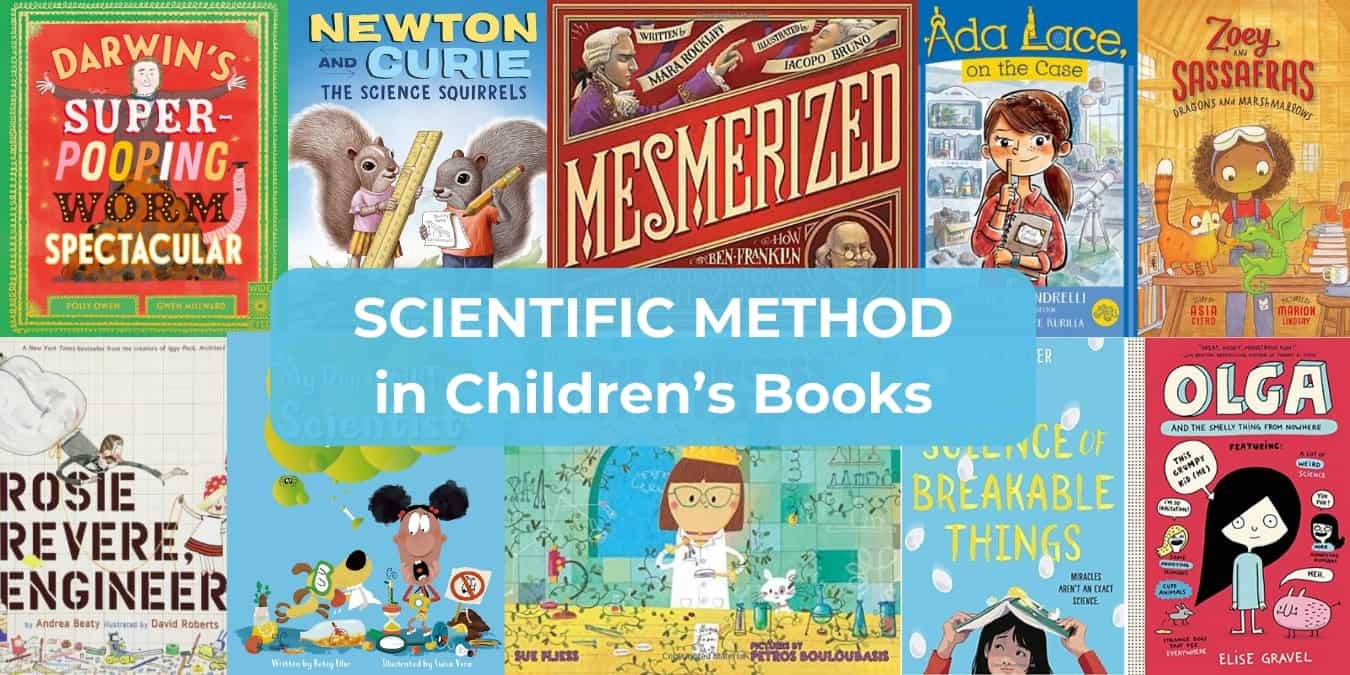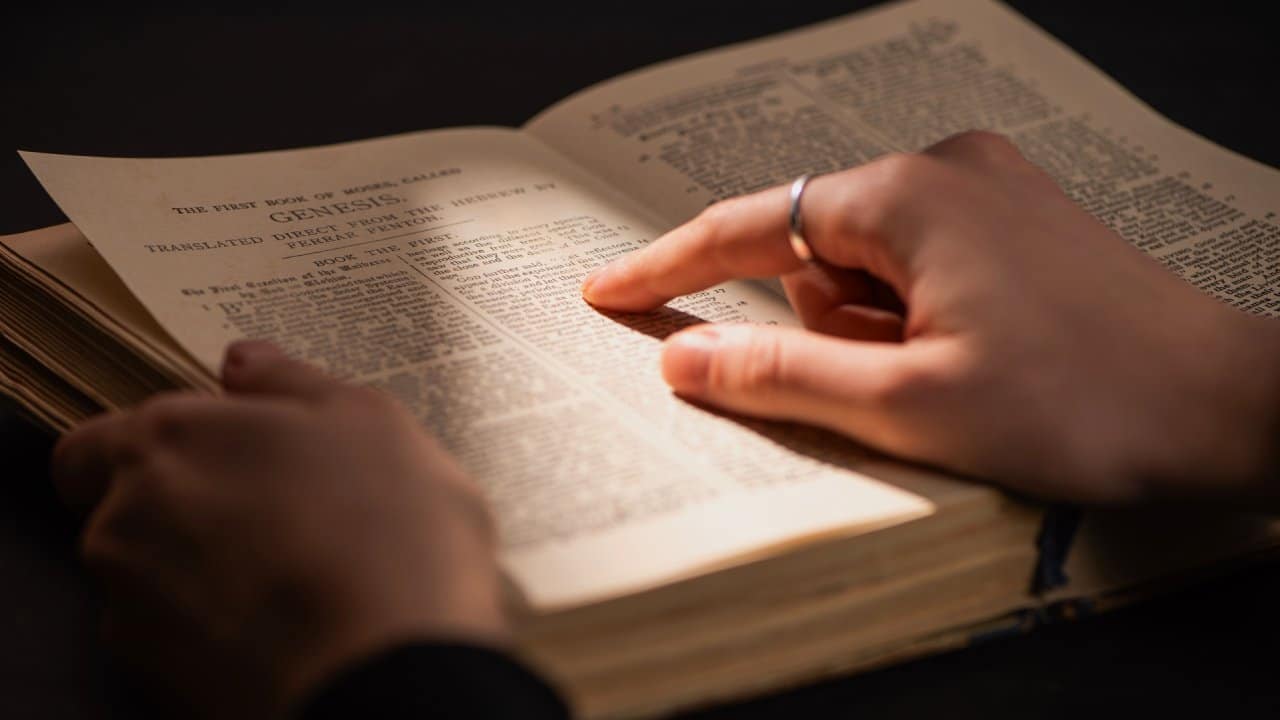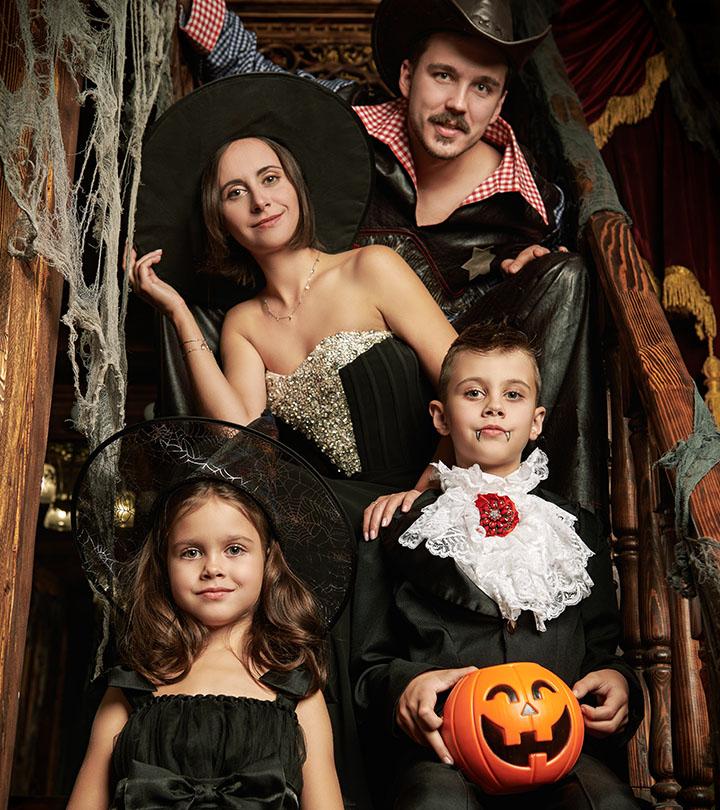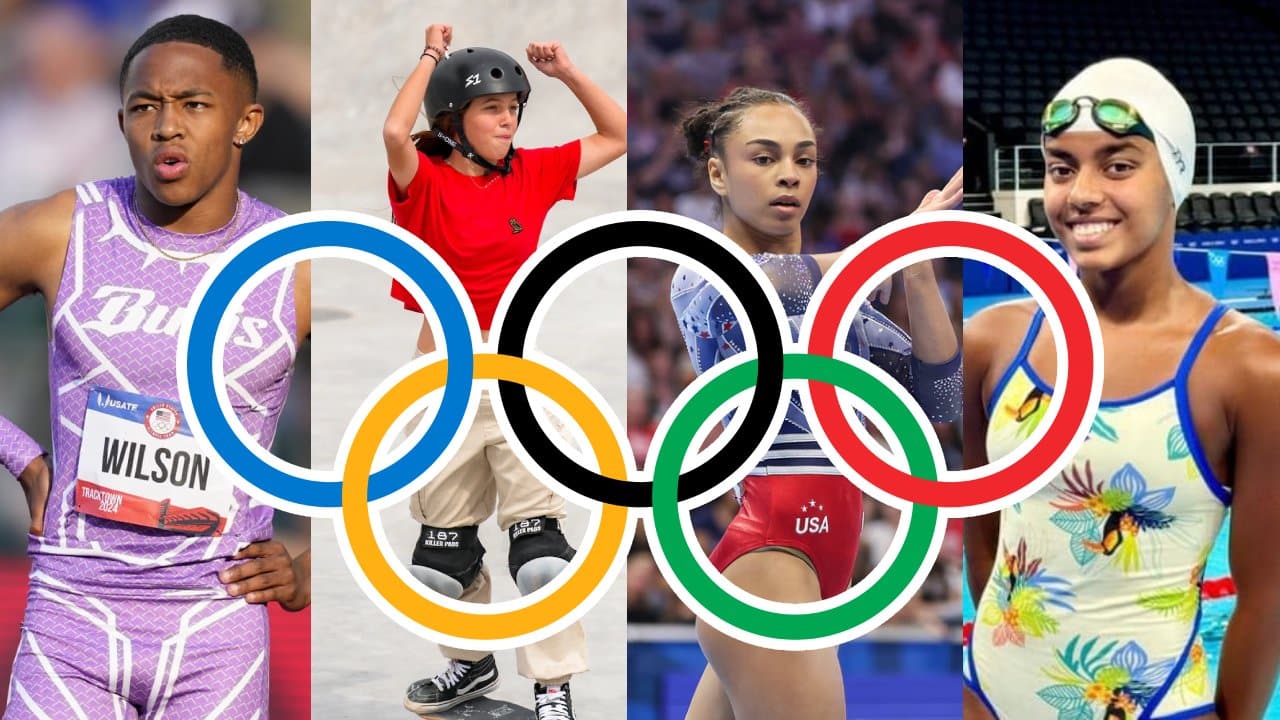Get your kids excited about the scientific method with engaging picture books, chapter books, and middle grade books like these.
This science inquiry process is beneficial because it teaches kids to think– to make observations, ask questions, form hypotheses, experiment, analyze, fail, try again, and draw conclusions.
Children’s books using memorable characters and engaging plots show this process as fun and exciting.
You can find more about the scientific process in the Next Generation Science Standards (NGSS) Framework for Science & Engineering Practices.
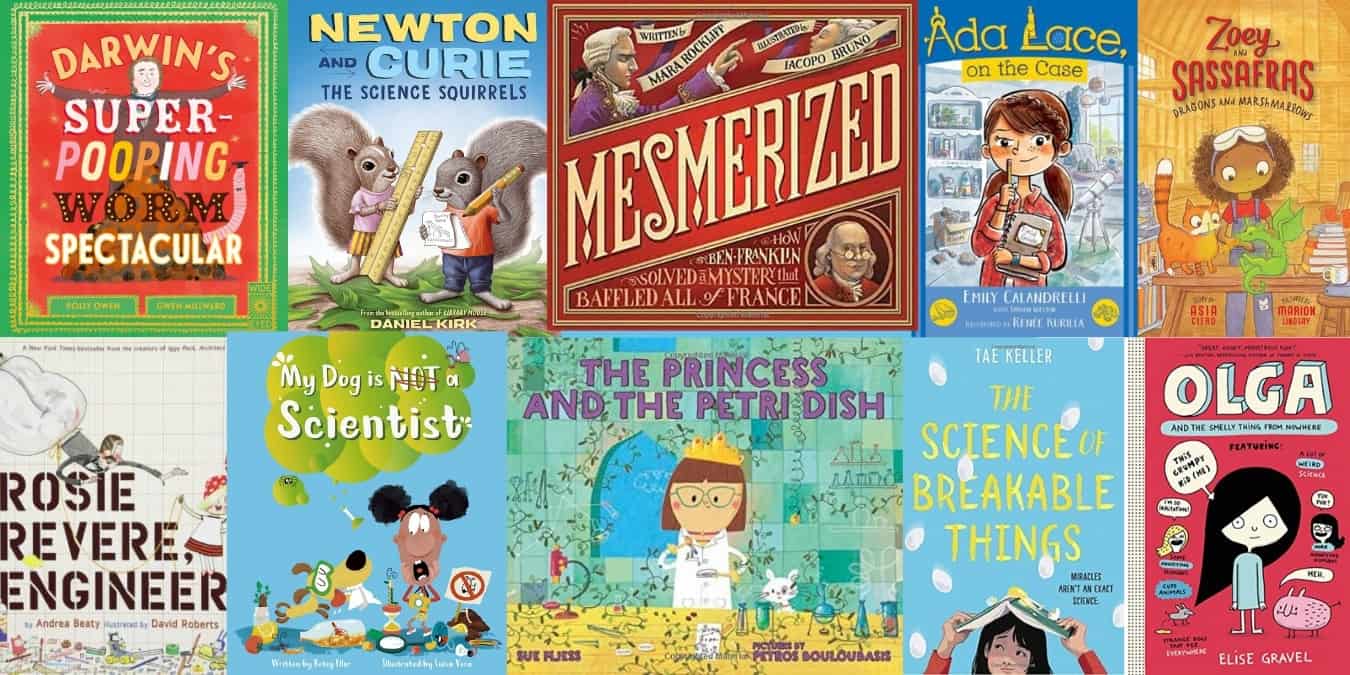
The Scientific Method in Picture Books
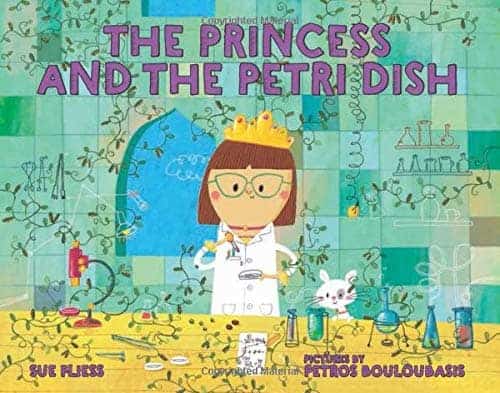
The Princess and the Petri Dish written by Sue Fliess, illustrated Petros Bouloubasis
A STEM-loving princess named Pippa uses the scientific method to improve the taste of green peas. She’s successful at first but must use her skills again to solve the overgrowing pea plants, which show the kingdom that she’s the best scientist in the land.
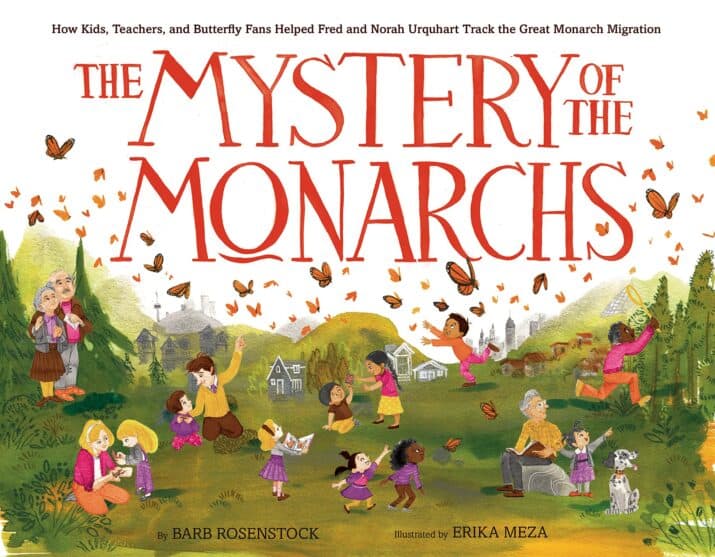
The Mystery of the Monarchs written by Barb Rosenstock, illustrated by Erika Meza
Using the scientific method, a teacher named Fred and his wife Norah decided to research his burning question about where the monarchs went in the winter. Because they couldn’t do it alone, they enlist the help of kids and teachers throughout North America to track monarch butterfly sightings. It takes years to find out where the butterflies went–which turned out to be a small area in Mexico. Their story shows the fascinating and exciting process of a scientific inquiry.
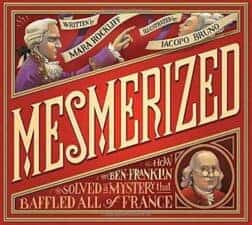
Mesmerized: How Ben Franklin Solved a Mystery that Baffled All of France written by Mara Rockliff, illustrated by Iacopo Bruno
This picture book narrates a little-known part of Ben Franklin’s history. We see Franklin use the scientific method to figure out what the unsavory Dr. Mesmer is up to. Is he doing magic, science, or fraud? Excellent images, design, and writing will mesmerize young readers.
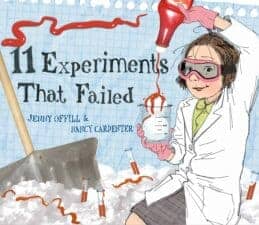
11 Experiments That Failed written by Jenny Offill & Nancy Carpenter
This science-loving heroine tries 11 unusual experiments which go through the entire scientific process. Let me give you an example:
Question: Can a live beaver be ordered through the mail?
Hypothesis: A live beaver can be ordered through the mail.
What You Need: Five-dollar bill, envelope, stamp
What to Do:
1. Fill out mail-order beaver form.
2. Attach five-dollar bill.
3. Place form in stamped envelope.
4. Mail.
What Happened:
Allowance withheld until further notice.
House declared No Beaver zone.
You can imagine the illustrations showing these steps, right? This book cracks me up!
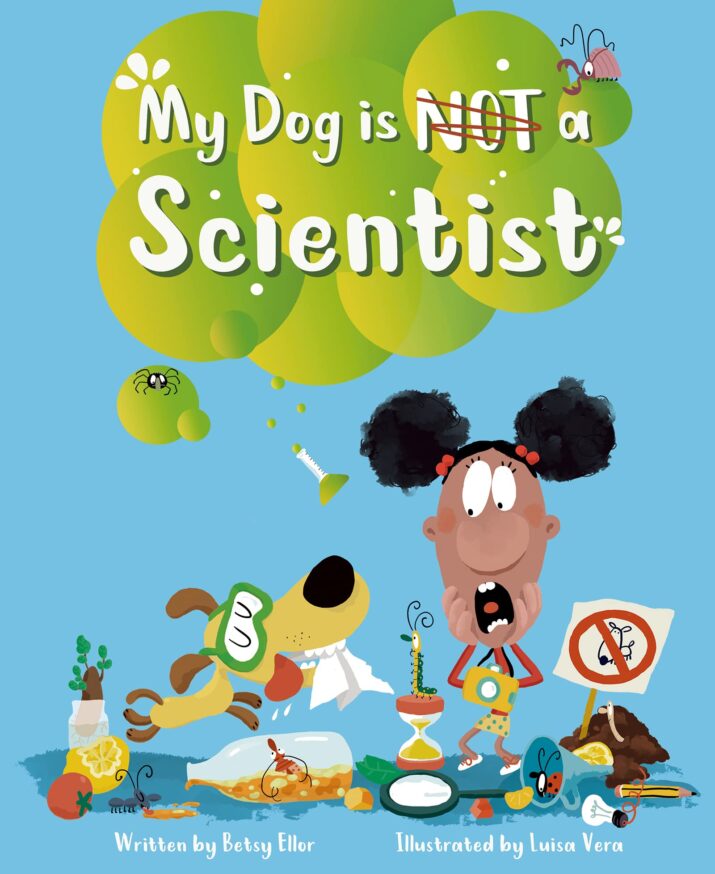
My Dog is Not a Scientist written by Betsy Fllor, illustrated by Luisa Vera
Yara is determined to prove she’s the greatest scientist and win the science fair. She starts with a question. And makes observations and hypotheses. But her dog Renzo always messes up her process, and her rude science-fair-winning neighbor Eddie says she’s not a real scientist. After failing because of Renzo, Yara realizes that actually Renzo is the best scientist of all — he follows his curiosity, asks questions, observes, forms a hypothesis, and tests it! With charming illustrations, this is a funny read aloud that celebrates the scientific method!
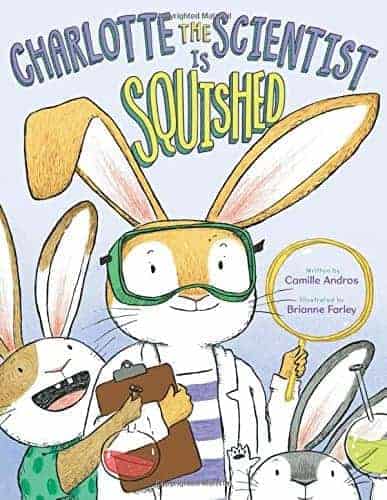
Charlotte The Scientist Is Squished written by Camille Andros, illustrated by Brianne Farley
Get ready for a charming STEM story! Charlotte is squished in her very big family so she implements the scientific method to solve her squished problem. She asks questions, hypothesizes, and experiments. And decides …to move to outer space. (Bet you didn’t see that one coming.) There, she observes that she misses being squished. Using the scientific method again, Charlotte discovers the perfect solution that allows her to be near her family but not as squished as before.
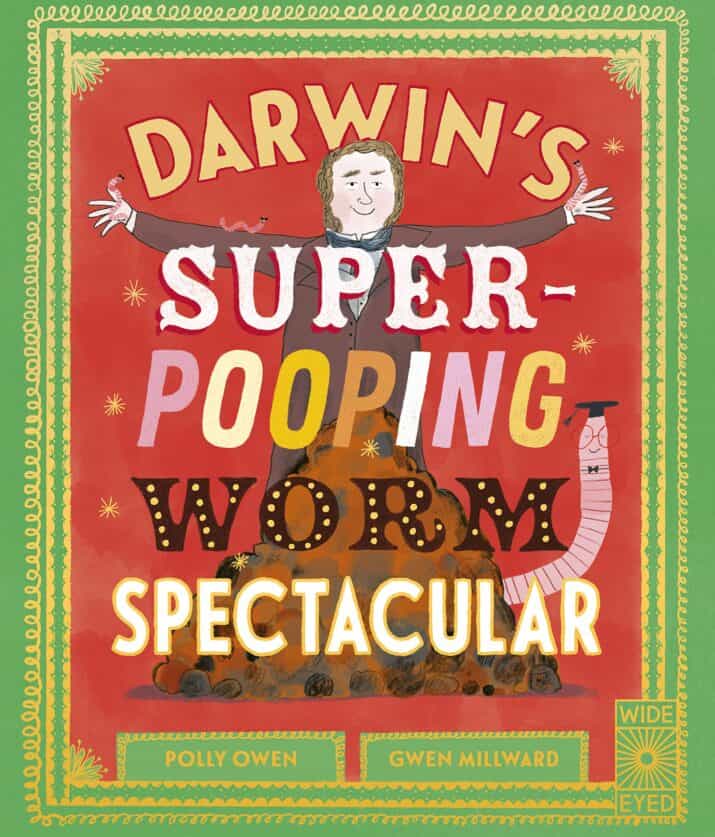
Darwin’s Super-Pooping Worm Spectacular written by Polly Owen, illustrated by Gwen Millward
Charles Darwin knew that earthworms were special–he just had to prove it. So, he used the scientific method to hypothesize, test, and observe the worms. He realized that the worms were special because of their poop. Worm poop helps plants grow, and that is poop-tastic! Who knew!? This book is sure to be popular with kids and adults — it’s fun and informative.

Scampers Thinks Like a Scientist written by Mike Allegra, illustrated by Elizabeth Zechel
When an owl shows up in the garden, the mice can’t eat the garden’s yummy food anymore. But Scampers has an idea. She doesn’t tell readers her idea (hypothesis) so you’ll have to infer but we see her experiments. First, she uses a rag-doll mouse, then a marching band, then a catapult. But the owl never moves. Scampers decides to try her experiments on another owl — one in the woods. Which moves! She makes a deduction and shares her conclusions with the other mice — that the garden owl isn’t a real owl. Now they can all eat from the garden again!! I loved Scampers’ growth mindset and curiosity! And what a fun story to model the scientific method.
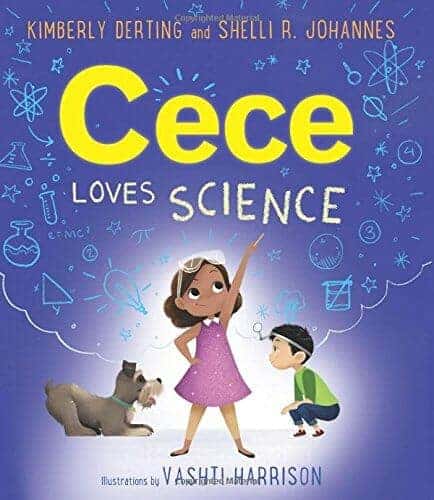
Cece Loves Science written by Kimberly Derting and Shelli R. Johannes, illustrated by Vashi Harrison
Cece loves to ask questions — why, how, and what if. Her teacher at school, Ms. Curie, encourages her and teaches her about famous scientists and different science. Then, Cece and her best friend Isaac work on a science project using the scientific method. She realizes, “Science isn’t just about asking questions . . . real scientists have fun finding answers, too.“
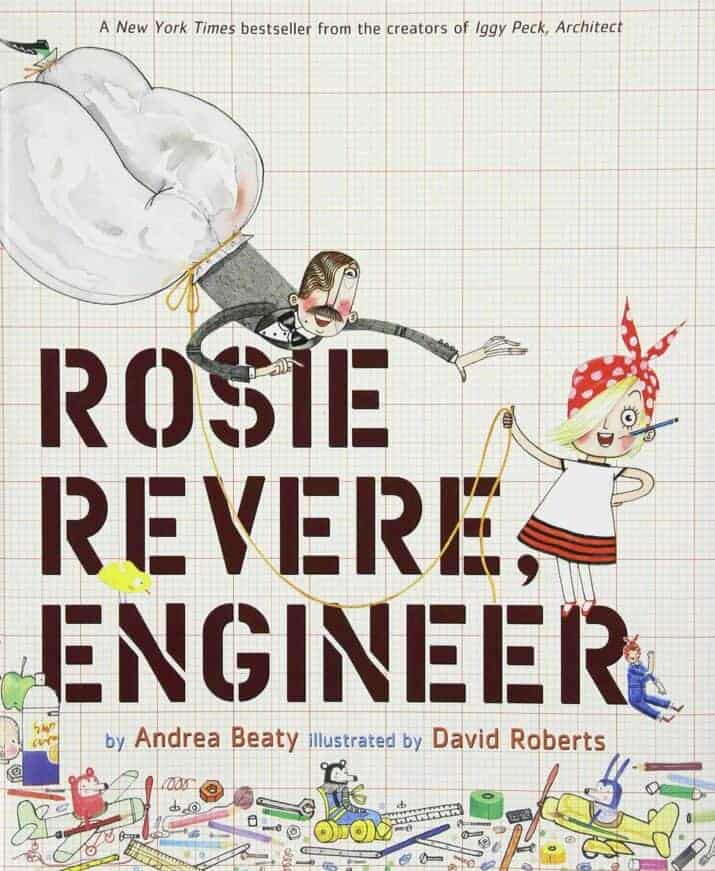
Rosie Revere Engineer written by Andrea Beaty, illustrated by David Roberts
Rosie is an exuberant inventor who uses things around her to invent wonderful contraptions — like the flying machine she makes for her great-great-aunt Rose. When it doesn’t fly, Rosie thinks she’s failed. But her wise Aunt Rose shows Rosie that failure is a success — and that failure only happens if you quit.
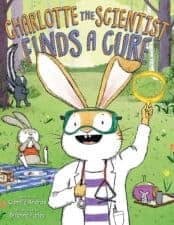
Charlotte the Scientist Finds a Cure written by Camille Andros, illustrated by Brianne Farley
Grandpa and other animals are feeling sick so Charlotte uses scientific reasoning to get to the bottom of the problem. Charlotte forms a hypothesis, makes a second hypothesis, and conducts clinical trials. Not only is the scientific method demonstrated, but this picture book is also full of rich vocabulary words and sends the message that you don’t have to be the oldest, biggest, or be the smartest to make a difference.
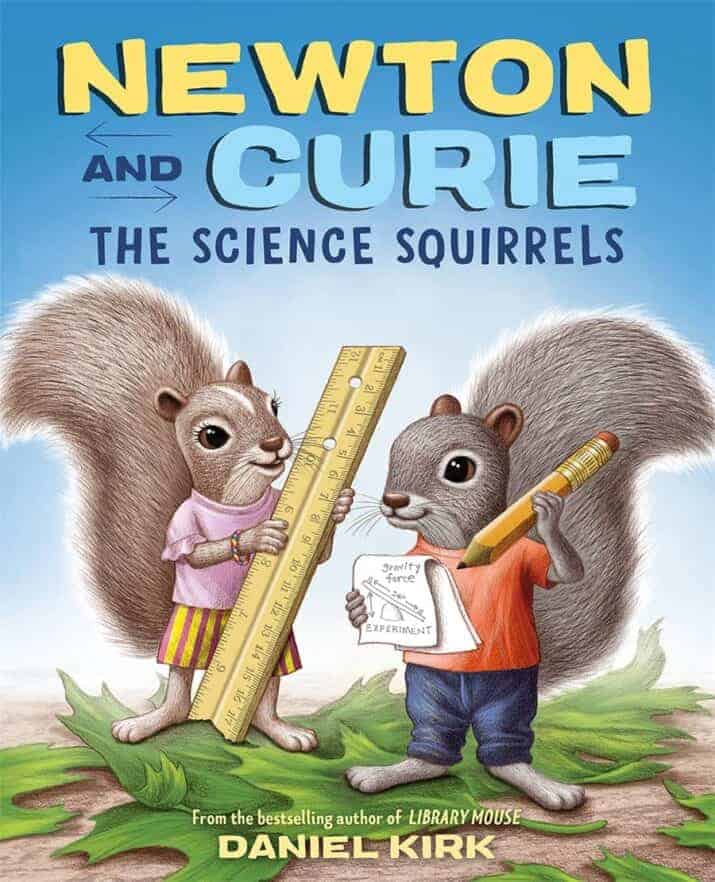
Newton and Curie: The Science Squirrels by Daniel Kirk
Newton is a curious squirrel with lots of questions. He overhears science lessons in a classroom with an open window and learns about simple machines. Then, he and his little sister do experiments that apply the scientific principles he’s learned–they make a swing, a seesaw, and a pulley — showing that science is fun and can be helpful.
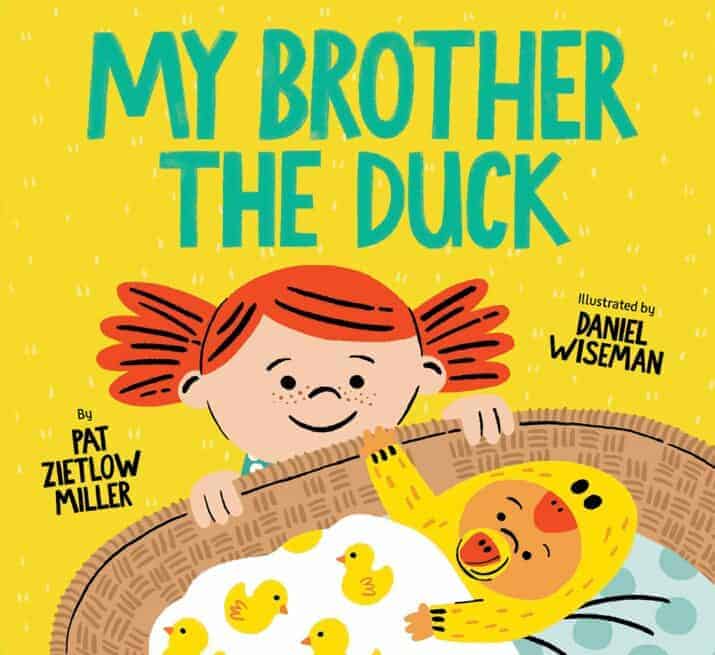
My Brother the Duck written by Pat Zietlow Miller, illustrated by Daniel Wiseman
If you like cute, silly books, you’ll be charmed by this little girl who uses the scientific method to conclude that her new baby brother is actually a duck!
The Scientific Method in Chapter Books & Middle Grade Books
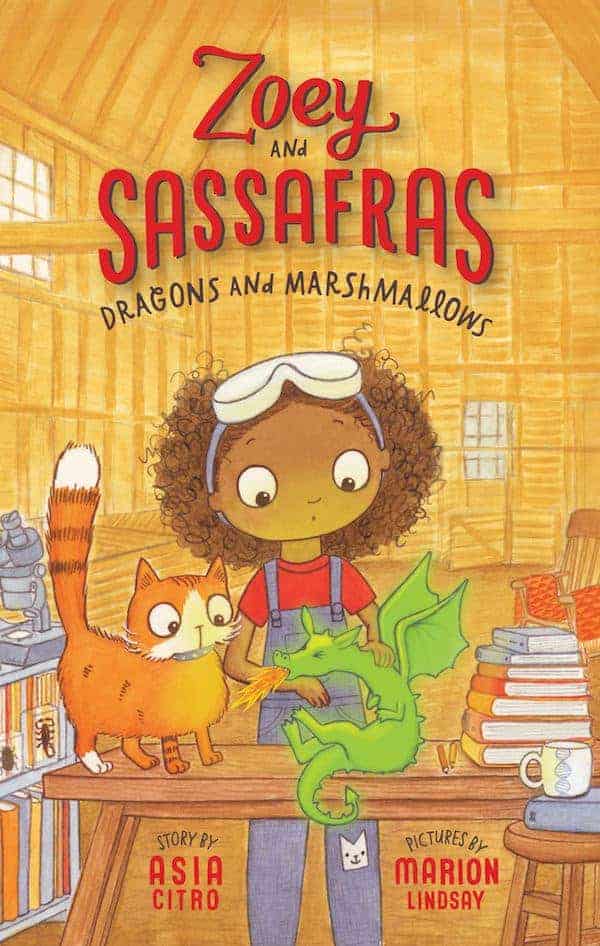
Zoey and Sassafras Dragons and Marshmallows #1 by Asia Citro, illustrated by Marion Lindsay
(ages 6 – 9)
This is an entertaining and well-written story with the coolest mix of science and magic, a diverse main character, and fantastic illustrations that will get kids reading and learning. Zoey, like her mom, can see magical creatures and is tasked to care for any injured creatures that might need help. In this first book in the chapter book series, Zoey uses her science skills (including research and the scientific method) to figure out how to care for a sick baby dragon.
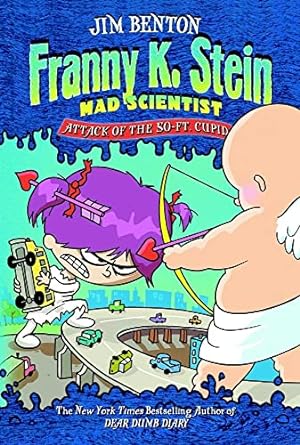
Franny K. Stein by Jim Benton
(ages 6 – 9)
Franny is not a normal kid but a mad scientist. We love her wacky, laugh-out-loud stories that show her using the scientific method — usually with disastrous results.
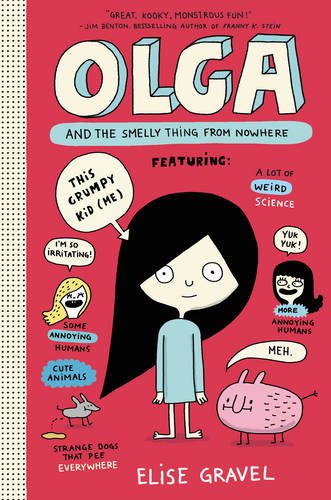
Olga and the Smelly Thing From Nowhere by Elise Gravel
(ages 7 – 10)
If you like kooky stories, this chapter book fits the bill. Olga finds an unusual, unknown creature whom she names “MEH” after the sound that it makes. She uses her deductive reasoning to figure out what it is (something new!) and what it likes to eat (olives)! But what will she do when Meh disappears? Here’s what I love about this book… One, the illustrations rock! Two, the narrator’s voice is believable and funny. Three, the plot includes mean girls who aren’t so mean after all.
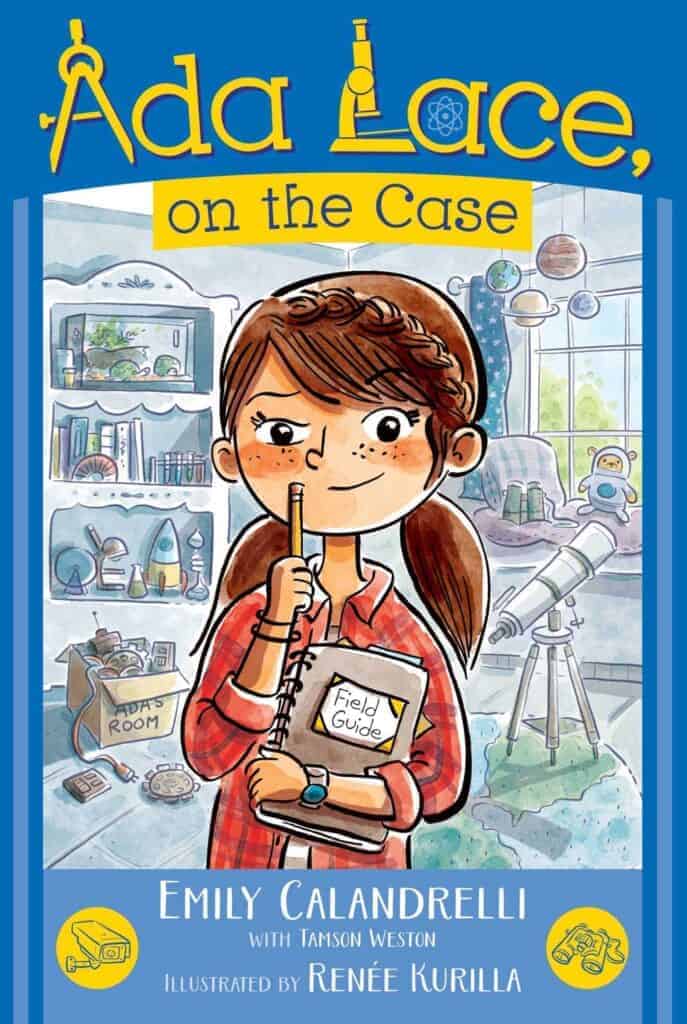
Ada Lace is On the Case by Emily Calandrelli with Tamson Weston, illustrated by Renee Kurilla
(ages 7 – 10)
When Ada moves to a new neighborhood, she looks out her window to observe her surroundings. But when she notices a distraught neighbor whose dog is missing and asks her new neighbor friends to help her find the missing dog. The friends use science and technology to solve the mystery of the missing dog.
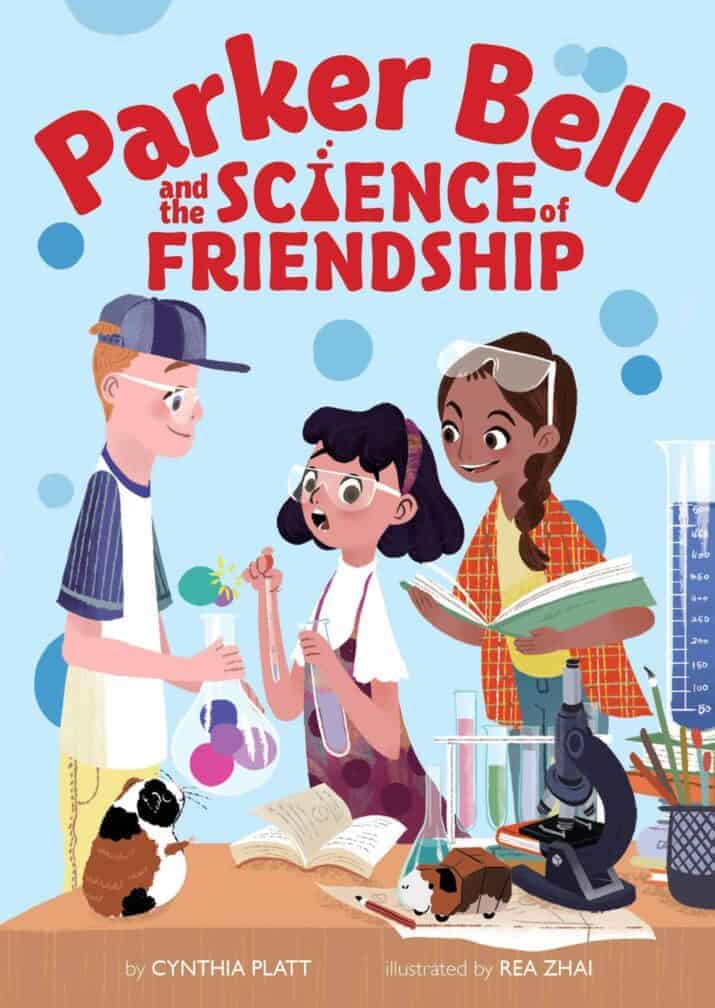
Parker Bell and the Science of Friendship by Cynthia Platt, illustrated by Rea Zhai
(ages 7 – 10)
Parker loves science and hopes she and her team will win a medal in the science competition. The lovely friendship and STEM book engages readers in a relatable story about Parker’s new friendships as well as using the scientific method for invention, robots, & egg drops.
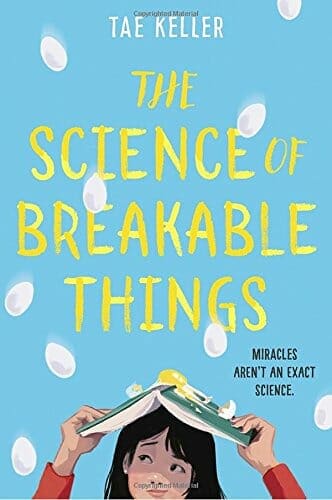
The Science of Breakable Things by Tae Keller
(ages 9 – 12)
Natalie wants to figure out how to help her mother, who we infer is depressed. (Clues: she’s in her bed all day long and no longer working.) As Natalie prepares for an egg drop contest with two other kids, she tries to solve her mother’s situation with the same scientific process zeal as the egg drop contest. Her ultimate plan is to win the contest then use the prize money to take her mother away on a special trip. Throughout the story, we see Natalie’s friendships develop as well as the difficult understanding that life and depression are not an exact science. It’s a beautiful, well-done story and a compassionate look at depression.
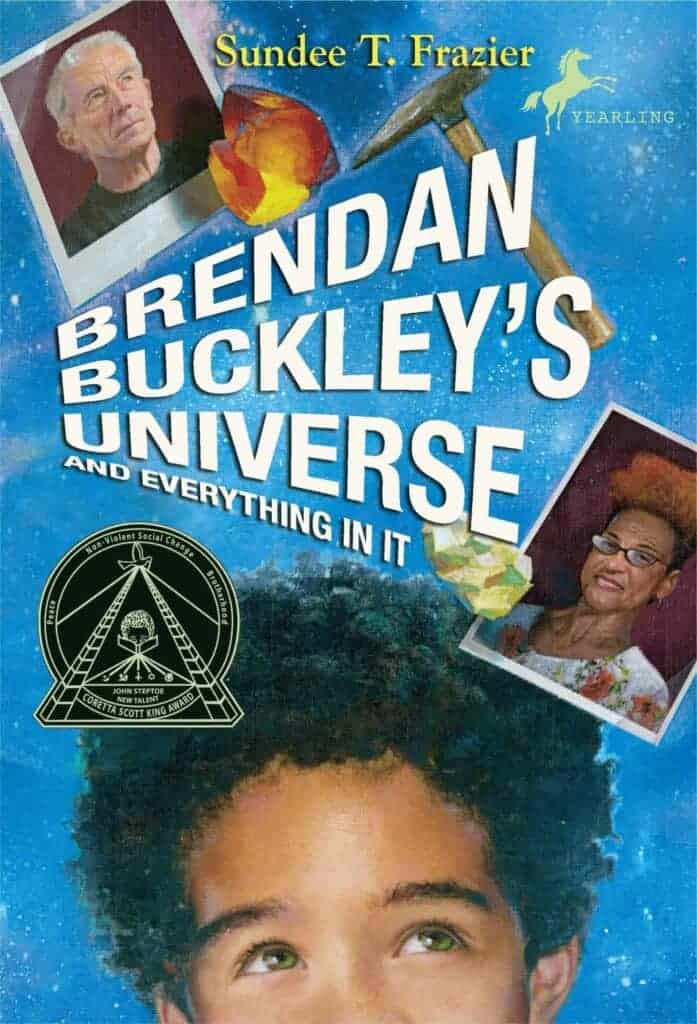
Brendan Buckley’s Universe and Everything In It by Sundee T. Frazier
(ages 9 – 12)
Self-proclaimed scientist Brendan decides to use the scientific method to figure out what happened to his mother and grandfather’s relationship. Ultimately, he will discover that science can’t always figure out matters of human emotions, including prejudice.
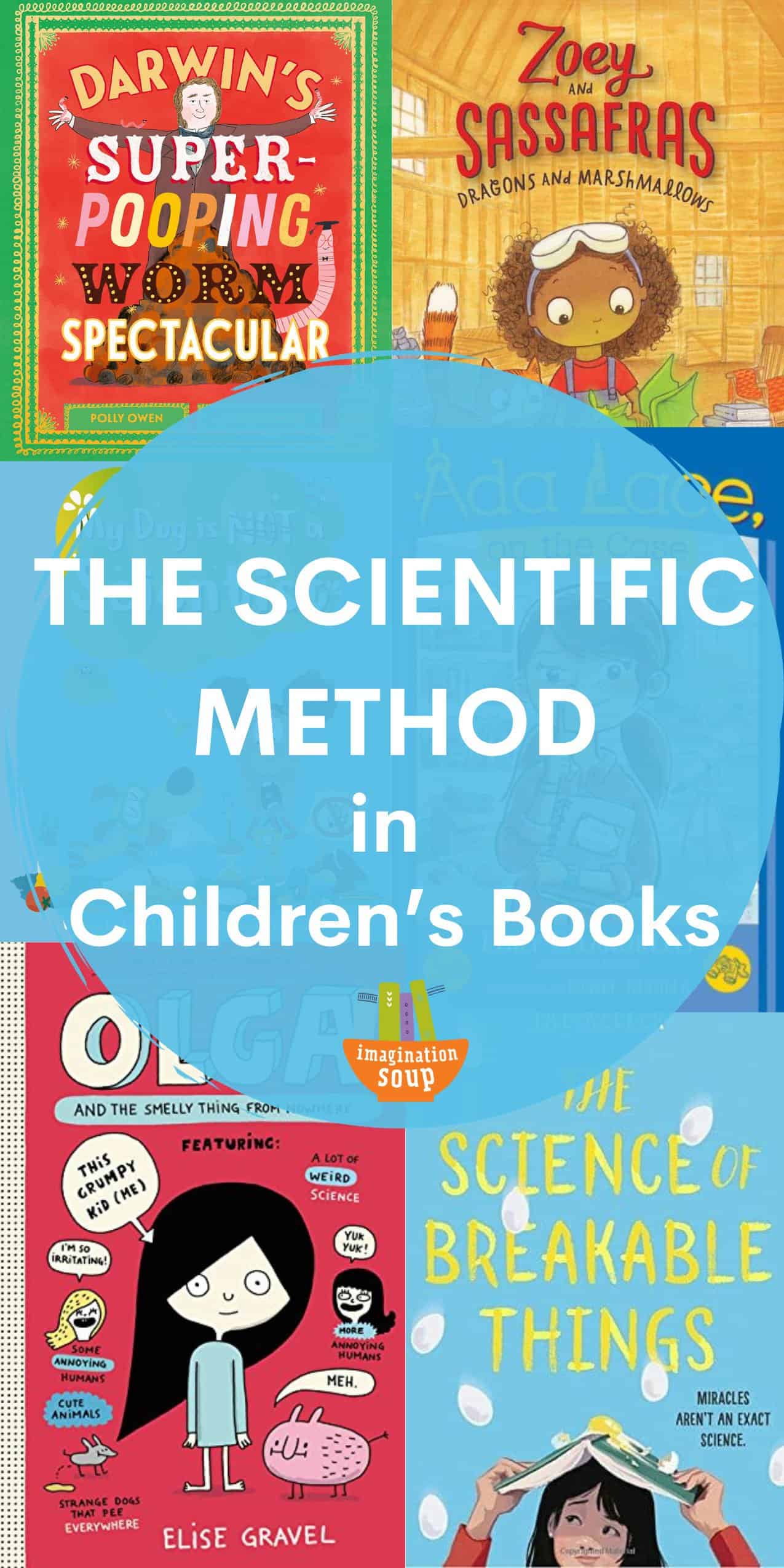
You Might Also Like:
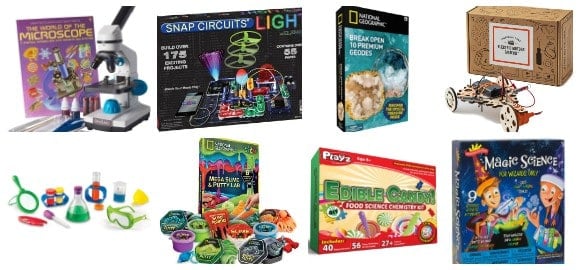
Award-Winning Science Kits for Kids
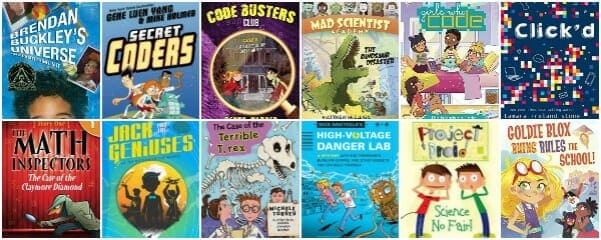
Best STEM Science Books for Kids

 PARENTING TIPS
PARENTING TIPS







 PREGNANCY
PREGNANCY








 BABY CARE
BABY CARE








 TODDLERS
TODDLERS








 TEENS
TEENS








 HEALTH CARE
HEALTH CARE







 ACTIVITIES & CRAFTS
ACTIVITIES & CRAFTS








 CONTACT
CONTACT ABOUT
ABOUT